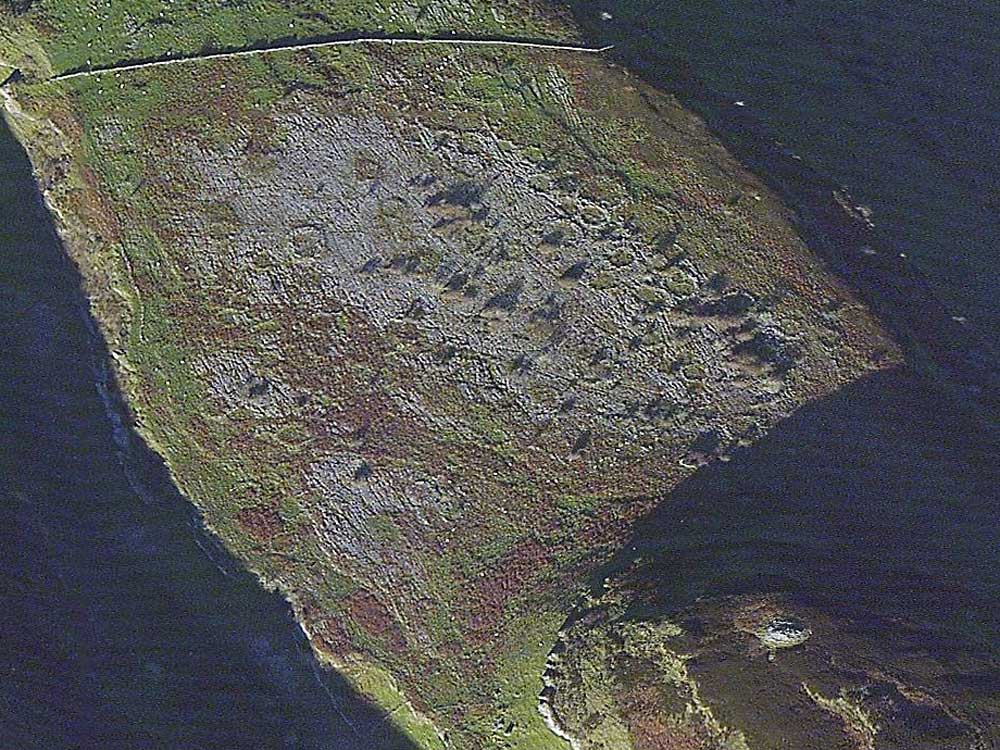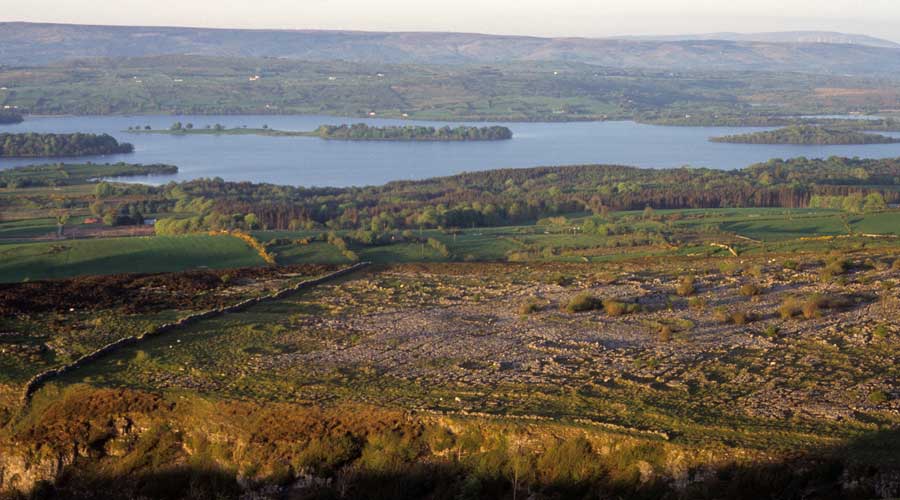Doonaveeragh Neolithic Village
The plateau of Mullaghafarna on the northern end of Doonaveeragh Mountain is best viewed from the edge of the east terraces on Carrowkeel Mountain, which offer breathtaking vistas across Lough Arrow and Moytura. The plateau land is privately owned, so you seek the owner's permission to visit.

The narrow valley between Carrowkeel and Doonaveeragh, is an amazing geological formation that gives the place its nome: "the Narrow Quarter". There are many Eighteenth-century cultivation ridges where potatoes and other crops were grown between the cliffs. The location surely made a fantastic natural cattle pen from the neolithic to medieval times. There are a number of stone cottages scattered around the area, with one example right at the base of the north end of Doonaveeragh. Some of these cottages were occupied up until the 1950s.

The Doonaveeragh house sites are at the same altitude as Shee Lugh, the neolithic cairn on the summit of the ridge of Moytura across Lough Arrow. The Mullaghafarna plateau is 226 meters above sea level, and has marvellous iews to the north and east. The western aspect is blocked by the higher ridge of Carrowkeel Mountain.
On this cracked and fissured limestone field, so similar in appearance to the Burren in County Clare, the remains of up to 153 house foundations have been surveyed. These sites consist of stone rings like small cashels ranging in diameter from 7 to 15 meters. These are the foundations of huts that would have had low stone walls, probably roofed with thatch onto a framework of saplings around a central pole. The largest of the circles are on the east side, overlooking the lake below.





